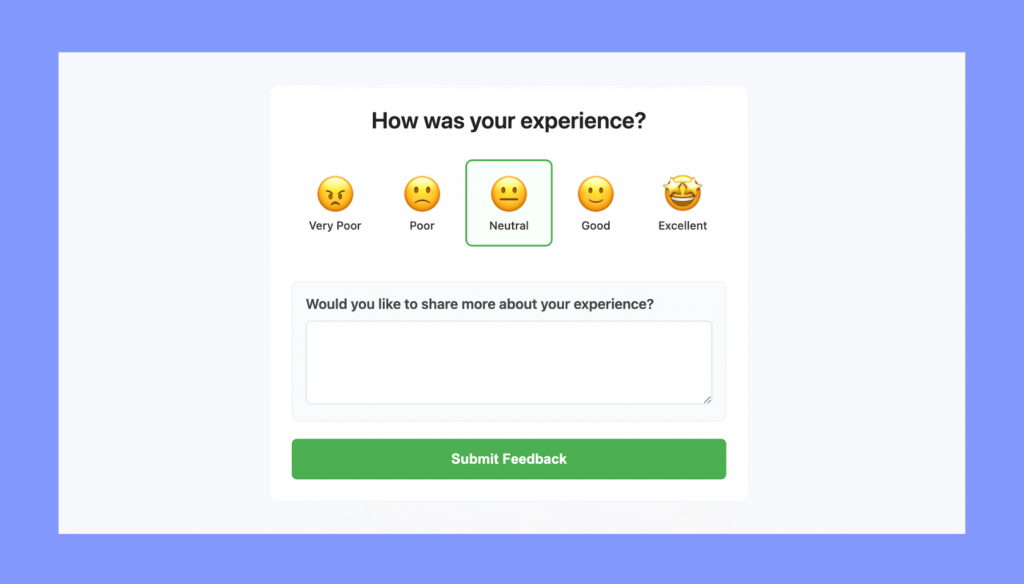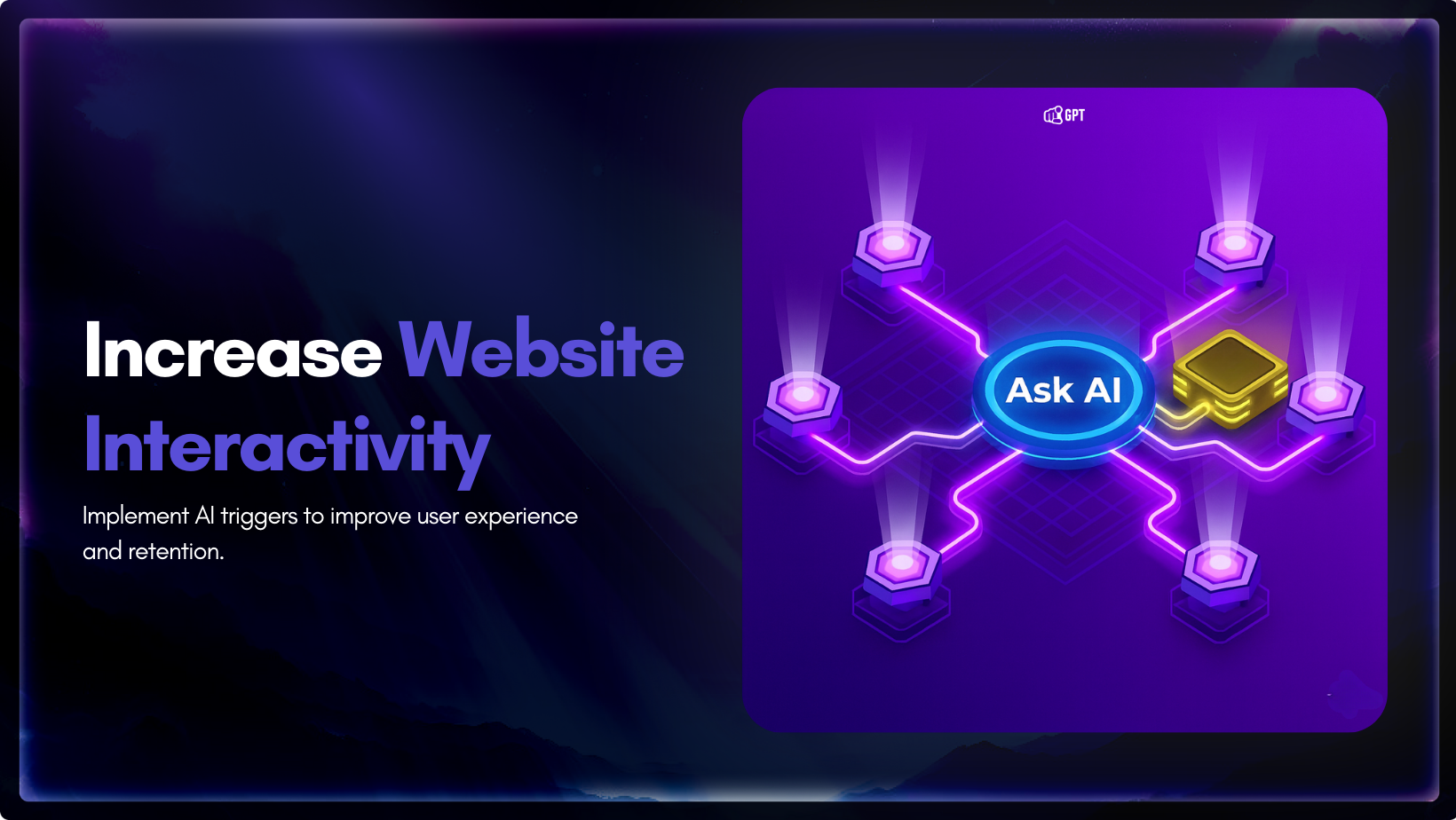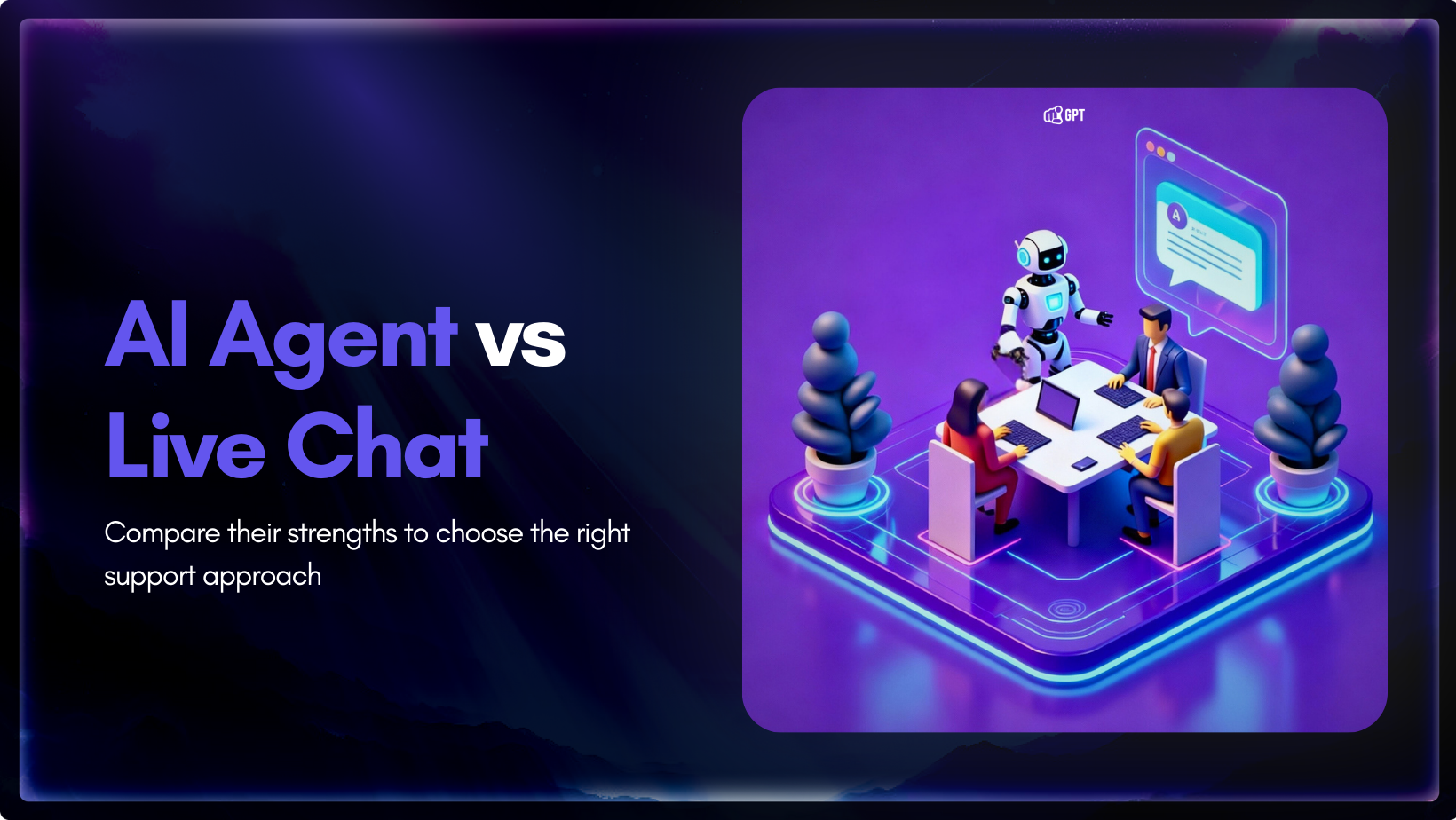What is CSAT? Tips to Improve CSAT using AI Chatbot


Customer satisfaction shows how well your business meets user expectations. CSAT (Customer Satisfaction Score) is widely used, but the way most businesses collect it—through delayed surveys—misses key moments that shape how users actually feel.
What really affects satisfaction is the experience itself: how fast users get help, how the interaction ends, and whether the result meets their expectations. AI chatbots improve this process by giving instant support, reducing effort, and asking for feedback during the conversation—not later.
This makes the process easier for users, leaves a better final impression, and matches how people judge service in real life. You get better feedback, more engagement, and fewer missed chances to improve.
This blog covers how CSAT works, where traditional collection fails, and how AI chatbots help you measure and improve customer satisfaction more effectively.

The Customer Satisfaction Score (CSAT) is a simple approach to determine how satisfied customers are with a product, service, or interaction. It is usually collected through simple polls or surveys in which people score their experiences often on a scale of 1 to 5.
A higher number indicates that customers are generally satisfied, while a lower score shows that areas might need improvement.
CSAT is one of the simplest ways to understand how customers feel about your service or product. Here’s why it’s worth paying attention to:
Measuring CSAT (Customer Satisfaction Score) is a straightforward way to understand how happy customers are with your service or product. Here’s how to do it properly:
1. Keep the Survey Short and Clear
Ask customers to rate their experience on a simple scale—usually 1 to 5:
Stick to one or two questions. The shorter it is, the more likely people will respond.
Share the survey right after a key moment—like a purchase or a support interaction. When the experience is still fresh, feedback is more accurate and honest.
Here’s the basic formula:
For example, if 80 out of 100 people gave a positive rating:
CSAT = (100 ÷ 80) × 100 = 80%
Look for patterns. Are customers consistently unhappy after support calls? Or are they happy with the product but not with delivery times? Trends in the data can point you in the right direction.
Don’t just collect scores—use them. If people are flagging the same issue, fix it. If they’re happy with something, build on it. That’s how CSAT becomes more than just a number.
Timing matters when collecting feedback. Here are the key moments where CSAT works best:
1. Right After a Purchase or Transaction
Send a quick CSAT survey once the customer completes a purchase. It helps you understand how smooth their buying experience was—from browsing to checkout. If something felt off, you’ll know exactly where to look.
2. After a Support Interaction
Once a customer speaks with your support team, check how they felt about the help they received. Was the issue resolved? Did the agent understand their concern? This kind of feedback is key for improving your support quality.
3. After Product or Service Delivery
When the product arrives or a service is completed, ask how it went. Was the item as expected? Did it arrive on time? Was the packaging intact? CSAT here helps flag any issues in your delivery or fulfillment process.
4. After a Product Update or New Feature Launch
Just rolled out a new feature or update? Use CSAT to see how customers feel about it. Their responses tell you if the change actually helped—or if more tweaks are needed.
Collecting CSAT at the right moments gives you relevant, real-time feedback. And that’s what helps you fine-tune your product, service, and overall customer experience.
There’s no one-size-fits-all number when it comes to CSAT. What’s considered “good” can depend on your industry, business size, and what your customers expect. That said, there are some general benchmarks you can use as a guide:
Some industries naturally score higher than others. For example,
Tracking how your score changes over time is more valuable than fixating on a single result.
If your CSAT is consistently high or improving, you’re probably on the right track. But if it starts to dip, it’s worth digging into what’s changed and why.
While CSAT is a valuable tool for measuring customer satisfaction, it’s most effective when combined with other feedback methods to gain a complete view of customer sentiment.
CSAT (Customer Satisfaction Score) is a common metric for measuring customer satisfaction, but it’s not the only one. Here’s how it compares to other popular metrics:

By using these metrics together, businesses can gain a well-rounded view of both customer satisfaction and loyalty, enabling more targeted improvements in the customer experience.
Accurately measuring CSA help businesses assess customer satisfaction, but certain mistakes can lead to misleading results. Here are the key pitfalls to avoid:
1. Avoid Bias and Leading Questions
Ensure survey questions are neutral and do not steer customers toward a specific answer.
A balanced question like “How satisfied are you with your experience?” yields more reliable insights.
2. Keep It Short and Simple
Long surveys reduce response rates. Keep CSAT surveys concise, ideally with just one or two key questions.
3. Avoid Jargon and Technical Language
Use clear, straightforward language that all customers can understand. Avoid industry terms that might confuse respondents.
4. Don’t Merge Multiple Questions
Each survey question should focus on one specific aspect of the customer’s experience. Combining topics can make it harder to interpret responses accurately.
5. Avoid Making Assumptions
Don’t assume you already know what matters most to customers. Let the survey results reveal their real concerns and priorities.
6. Pay Attention to Grammar and Formatting
Typos and poor grammar can make your survey look unprofessional and reduce credibility. Proofread before sending it out.
7. Define the Purpose of Your Survey
Before launching a CSAT survey, clarify what insights you want to gain. Having a clear goal ensures you ask the right questions and collect meaningful data.
By avoiding these common mistakes, businesses can gather more accurate and actionable CSAT data to improve customer satisfaction effectively.
Improve CSAT using AI chatbot can play a key role by improving the customer experience in real-time. Here’s how:

AI Chatbots can quickly resolve common issues like order tracking or billing inquiries through automated workflows. Fast resolutions help minimize customer wait times which directly boosting CSAT.
By remembering past interactions, AI chatbots can personalize responses to fit the customer’s current issue. For example, the chatbot might offer follow-up assistance or discounts if a customer had a prior issue with a product, ensuring a more personalized experience and higher satisfaction.
When AI chatbot detects customer hesitation such as spending too long on a product page. It can step in to offer assistance, guide the customer, or suggest related items. This reduces effort on the customer’s part and positively impacts CSAT.
AI Chatbots allow customers to independently solve problems like checking order status or booking appointments. Self-service options provide convenience, reducing frustration and leading to a better CSAT score.
Chatbots can seamlessly collect CSAT feedback right after an interaction. By gathering insights while the experience is fresh, businesses can make immediate improvements and show customers that their opinions matter.

By delivering accurate and consistent information, AI chatbots prevent issues caused by incorrect answers, which can lead to frustration. Providing reliable service boosts customer satisfaction and positively affects CSAT scores.
AI Chatbots that integrate with multiple platforms (websites, mobile apps, social media) ensure customers receive a consistent experience, no matter where they interact. This uniformity helps build trust, leading to higher satisfaction and better CSAT scores.
By focusing on efficiency, personalization, and seamless transitions, chatbots can directly influence CSAT scores by improving the overall customer experience.
They offer instant support, reduce wait times, and handle routine queries efficiently. By lowering customer effort and resolving issues quickly, they help improve satisfaction.
They use past chats, order history, and customer preferences to respond with relevant information, making the interaction more direct and useful.
Yes. They can send follow-up messages after a query is resolved to confirm everything’s working and check if anything else is needed.
Not always. Their impact depends on how well they’re set up and integrated into your support process.
Yes. They reply instantly, which helps cut down waiting and speeds up resolutions.
Improving CSAT isn’t just about collecting ratings—it’s about acting on what customers share. Quick responses, clear communication, and easy access to support all contribute to a better experience.
Using feedback while it’s still fresh helps identify what needs fixing and where you’re doing well. Over time, small adjustments based on this input lead to noticeable improvements.
Consistency across channels—whether it’s your website, app, or social media—also plays a big role. When customers know they’ll get the same quality of service wherever they reach out, it builds confidence.
Strong CSAT scores reflect a business that listens and adapts. And in a competitive market, that’s what helps you retain customers and grow sustainably.
Join thousands of businesses using AI Chatbot to automate support, boost engagement,.
No credit card required • Full access • Cancel anytime

Shopify stores often use a chatbot on their website to handle product questions, order updates, and support. But customers also message on WhatsApp expecting the same quick answers. Most of them already use WhatsApp throughout the day, so reaching out there feels natural. A chatbot that works across both channels responds in seconds, guides purchase […]


Most businesses do not struggle to generate leads. They struggle to know which ones are worth acting on. Forms get filled, DMs arrive, emails are opened, and chats happen across multiple tools. Some prospects convert. Most do not. The real problem is that there is no reliable way to tell, early enough, which signals actually […]


Artificial Intelligence has advanced quickly over the past five years, moving from an experiment to a standard component of modern business. AI has become a central part of enterprise strategy. 88% of organizations are now using AI. This figure has increased from 78% the year before. This transformation is reshaping how companies run, communicate, and […]


You invest time writing your website copy. You explain features, pricing, and how everything works. The information is there. Still, some visitors leave without clarity, and small gaps in understanding often stop them from moving forward. This happens because a static page cannot adjust to what they want at that moment. They skim a section, […]


AI agent and live chat each play a different role in customer support, and the choice between them influences how a team handles growth. Companies are moving toward faster support models, and one clear trend is the use of AI to reduce operating costs by up to 30%. The difference shows up when ticket volume […]


You have definitely heard about the use of AI in marketing. But have you ever seen or learned how it can actually drive revenue? Well, firms using AI in marketing and sales report significant benefits. According to a recent study by McKinsey & Company, revenue increases from AI show up most in marketing and sales, […]
